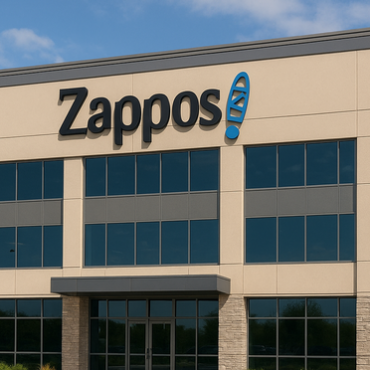HTC Company for Smartphones

Description of HTC Company for Smartphones
HTC Company for smartphones deal with the manufacture of smart phones and was founded by Cher Wang in 1997 in the city of Taiwan. The company uses HTC as its name which is (High Tech Computer) in full. Most of its smart phones are branded using that name in the market. HTC Company for smartphones promoted its brand in 2006 and the products were taken to market through various partnerships including four from the US, other top European operators, and other fast growing Asian operators (Hughes, 2015). HTC Company for smartphones has its headquarters in Taiwan and its key operation centers are found in the US, Taiwan, China and the United Kingdom. These centers help in ensuring that the relationship with customers is enhanced and maintaining markets in the 21 known regions like Belgium, Denmark, Singapore, Malaysia, etc. Writers who offer management case study help at Edudorm essay writing service notes that the corporation holds a strong competitive advantage in the industry of smart phones due to its competitive design, development and innovation (Hughes, 2015). HTC Company for smartphones has recently received the highest industry honor by the GSM Association as a device manufacture of the year. Since its foundation, it has undergone three comprehensive realignments and these are professional PDA, Global HTC Brand and Smart Phones. HTC developed the first handheld PDA in the world (Plunkett, 2008). HTC Company for smartphones has launched various devices in the course of its realignments for example mobile wireless devices. The mission of the company is to become one of the best innovative suppliers of communication and mobile information devices by ensuring provision of value added design, logistics and service capabilities and world class manufacturing (Hughes, 2015).
The Size of HTC Company for Smartphones
HTC Company for smartphones is one of the leading manufacturers of smart phones in the world. It carries out its operations with a number of partnerships in the key operation centers. This operation centers help to strengthen the company’s relation with the customers and also maintain its presence in the key markets. HTC Company has registered a fall in its market share. In March this year, it had a market capital of around $4.06 billion. It accounted for a fall of 2% in the last quarter’s global Smartphone market despite of being the world’s leading manufacturers of smart phones in 2011 (Hughes, 2015). Experts who offer project management assignment help at Edudorm essay writing service indicates that this fall in the market share was as a result of competition. The company has the strongest market operation centers in North America with 48.8% revenues, in Europe with 30.4% revenues, in Asia with 20.8% revenues plus other regions.
Number of Employees at HTC Company for Smartphones
HTC hires recruits in the areas of product design, brand promotion, user interface and sales and marketing and it treats its employees as the most valuable assets. The company hires professional employees from Europe and America which increases its diversity. By the close of March 2010, they had a total of 8,948 staff globally. They had 169 non-Taiwanese staff that filled 30% managerial positions in the company (Hughes, 2015). Women in the company hold 21.4% of the 557 managerial positions. In 2013, the total number of employees had gone up to 17,280 with 1432 holding managerial positions.
History of HTC Company for Smartphones
HTC Company for smartphones started in 1997 by Cher Mi Wang in partnership with Peter Cho and HT Chou. The major purpose of the company was to introduce a combination a personal assistant and a cell phone (Plunkett, 2008). The project was not successful in that time since it required a large amount of capital. Mrs. Wang invested heavily in the project until it stood again by creating some improvements on the sections of engineer and designer. Tutors who offer business development assignment help at Edudorm essay writing service points that the first success was the introduction of a mobile computer in 2000 and this was ordered by Compaq then later HP. Then later on 2002, HTC was in its big hit when they developed the first Pocket PCs. This attracted big wireless providers such as T-Mobile, AT&T, Verizon wireless, etc. The first touch screen smart phone was one of their first major products in the market and it came up in 2000 (Hughes, 2015).
The current human resource practice, policy process or procedure
Below is the organizational structure for HTC Company for smartphones that will guide us to analyze where change may be required.
The human resource of HTC Company for smartphones is structured as shown above. The structure is made adaptive, with open communication network, employee empowerment and minimal formal rule (Plunkett, 2008). This is because the major strategy of HTC Company for smartphones is innovation and this can explain why the organizational structure is in the format shown above. The human resource is characterized with management team, specialists, administrators and technical staff. According to the human resource nature of HTC, the management team is around 8% of the employees, specialists are around 21%, and administrators are around 7% while the technical staff is around 63% of the human resource (Hughes, 2015). Authors who offer operations management assignment help at Edudorm essay writing service notes that the structure indicates little direct supervision since the number of specialists is less than a quarter of the employee population. Basing on that, some workers have a weakness if not thoroughly supervised directly. They have a tendency of performing below the expected rate due to little supervision; therefore, this can affect the operation of the company hence necessitating change for this particular company. Human resource structure is the most determining the effectiveness of the company (Hughes, 2015). It gives a clear sense of how to organize, control and coordinate activities to achieve the goals of the organization. Therefore HTC needs to make some changes in its Human Resource structure in order to make it stronger in order to attain the best of its goals.
Reasons for the Proposed Change at HTC Company for Smartphones
Basing on the current change management theories, change is essential to all companies regardless of the industry, age or size (Myers, Hulks & Wiggin, 2012). One of the reasons for organization management change is the high rate at which the world is changing. The world is changing in terms of technology, systems of governance and the general business environment. Therefore with that move of the world, organizations are also required to change so as to be at the same pace with the requirement of the business environment (Myers, Hulks & Wiggin, 2012). Writers who offer strategic management assignment help at Edudorm essay writing service indicates that another reason for change proposal is that it is believed that organizations handling change are always flourishing and those that do not practice it, survive through struggle. Lastly, organizations have a goal that they are looking at to achieve and to achieve those goals; they are required to restructure their organization in a way that will help them attain what they are striving for. Therefore change is a necessity for any organization striving for progress (Myers, Hulks & Wiggin, 2012).
Diagnostic tools that determine organization readiness for change
Organization readiness for change can be determined by the following diagnostic tools. Task demand is one of the determinants of organization readiness for change (Ramanathan, 2009). This is indicated by the current state of the company that can necessitate it undergo change. Task demand can be illustrated by organizational poor performance in terms of marketing the products, low profit realization, low development and innovation strategies, etc. another determinant is resource availability; this is the ability of the company to raise the resources in respect to the specified change. The required resources may include human resource, expertise personnel, finances, physical materials, etc. The organization with available resources is more likely to initiate change whereas organizations with low levels of resources have less opportunity for change. Organization readiness for change can also be determined by situational factors (Ramanathan, 2009). These factors refer to external factors that affect consumers’ encounter with the product. Businesses are always dictated by proximity and nature of consumers’ relationships in the business hence determining decision making of the organization. Experts who offer marketing management assignment help at Edudorm essay writing service points that if the consumer relation with the business is strong and is expected to be strong in the long run, then the business may not require an immediate change whereas if the consumer relation with the business is doubtful, it is an indication of readiness for change in order to modify the organization system to suit the desires of the consumers. I believe these diagnostic tools are the best choice when diagnosing change in the organization (Ramanathan, 2009). This is because the tools mentioned address the overall state of the organization including the outside and the inside environment of the business. Therefore basing on the business analysis, one is able to detect whether the company is ready for change or not.
Assessment of the organization readiness for change using one diagnostic tool
HTC Company for smartphones, a once great smart phone manufacturer is now on a state of deathbed due to a fall of its market coverage. The company was known as one of the smart phones pioneers but it has now slipped out of the top 10 list globally. According to the results of 2015 second quarter, the company slashed sales by around 50% and a loss of five times high was predicted. The company is experiencing a longer period before selling its inventory. Authors who offer business assignment help at Edudorm essay writing service notes that the current state of HTC Company for smartphones can be explained using situational factors as a diagnostic tool. The state of the company indicates that the customers no longer purchase HTC’s smart phones probably due to a number of factors for example the quality of the product is low compared to other competitive brands, poor marketing strategies, or low innovation strategies. This therefore indicates that the company is ready for change. HTC Company for smartphones is required to adopt change in order to strengthen all its areas of weakness in order to resume the competitive influence that it had as smart phone manufacturers. The change should ensure production of quality products acceptable by the customers in the market, advancement in the marketing and innovation strategies (Ramanathan, 2009).
Conclusion
HTC Company has been an outstanding one among smart phone manufacturers. However the company has experienced a fall in its market share which has affected the overall operation of the company. This decline recommends for a change in the company in order to take back the company to its former position. Change in the company aims to create a new system that can enhance company operation for a success (Ramanathan, 2009). A company’s readiness to change is discussed in three stages as discussed in the current change management theories. The company’s readiness for change can also be determined by factors like task demand, situational factors and available resources. According to the current status of HTC Company, the company’s readiness for change is evident due to a fall in its market share which needs to be rectified.
References
Ramanathan, T. R. (2009). The role of organizational change management in offshore outsourcing of information technology services: Qualitative case studies from a multinational pharmaceutical company. Boca Raton, Fla: Dissertation.com
Myers, P., Hulks, S., & Wiggins, L. (2012). Organizational change: Perspectives on theory and practice. Oxford: Oxford University Press.
Plunkett, Jack W. (2008). Plunkett’s Outsourcing And Offshoring Industry Almanac 2009. Plunkett Research Ltd.
Hughes, B. (2015). HTC One (M8) for dummies.


